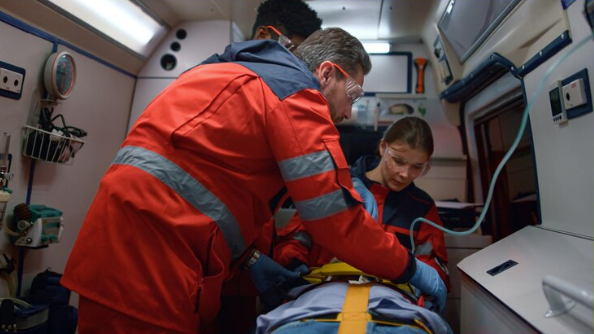When a patient boards a charter air ambulance, the journey is about more than just getting from Point A to Point B. In fact, the most critical phase often begins right after the wheels touch the ground. From tarmac to treatment, the transition must be seamless—and lives depend on it.
In this blog, we’ll explore how continuity of care works in charter medical transfers, the key players involved, and why post-flight coordination is just as vital as the flight itself.
Understanding Continuity of Care
Continuity of care refers to the consistent, coordinated, and uninterrupted medical attention a patient receives throughout their journey—from the moment of departure to final admission into a hospital or facility. In the context of charter medical transfers, this means:
- Smooth handover from air to ground teams
- Maintaining accurate medical records
- Ensuring the receiving facility is fully informed and prepared
- Ongoing monitoring and care en route to the final medical destination
Without this continuity, even the best-equipped air ambulance becomes just a ride—rather than a bridge to recovery.
Who Ensures a Smooth Handoff?
Several coordinated teams work behind the scenes and on the ground to ensure the handover is flawless:
1. Flight Medical Crew
They provide real-time updates to receiving hospitals and ensure that every treatment, observation, or intervention is documented. These medical logs are crucial during the patient transfer.
2. Ground Ambulance Team
Pre-arranged ground ambulances are typically waiting at the airport. They come with advanced life support systems and are briefed in advance by the air crew.
3. Receiving Medical Facility
Doctors, specialists, and nursing staff are informed well before the patient’s arrival so they can prepare ICU beds, surgical teams, or emergency care as required.
4. Medical Coordinators and Case Managers
These behind-the-scenes professionals communicate between families, insurance companies, hospitals, and the transfer teams to ensure the process flows without delays or miscommunication.
Key Components of Post-Landing Medical Transfer
➤ Detailed Medical Handover
Once the patient is off the aircraft, a structured handover takes place. This includes vital signs, recent treatments, medications administered during flight, and any special concerns.
➤ Patient Stability Monitoring
From aircraft to ambulance, the patient continues to receive care from trained paramedics or doctors. Vitals are monitored, oxygen is managed, and medication is administered if needed.
➤ Document Transfer
Copies of all medical records, imaging, diagnostic reports, and transfer notes are handed to the hospital staff to avoid duplication and ensure immediate continuity of treatment.
➤ Family Liaison
Families are often updated by a dedicated team. Some services even allow family members to follow the ground ambulance or meet directly at the receiving hospital.
Why This Stage Is So Critical
Even if the flight went perfectly, post-landing missteps can put the patient’s life at risk. A missed medication, unclear medical history, or communication delay can delay emergency surgeries or life-saving treatments.
That’s why experienced charter air ambulance providers work closely with local hospitals and ground ambulance partners to make the process precise, repeatable, and reliable.
Challenges in Continuity of Care
Despite best efforts, some obstacles can arise:
- Airport delays due to paperwork or runway access
- Hospital admission holdups, especially in public facilities or during high patient volumes
- Language barriers when transferring patients internationally
- Insurance verification delays that impact admission in private hospitals
Top providers pre-empt these challenges by planning well in advance, using multilingual coordinators, and verifying documents before takeoff.
Case Example: A Cardiac Emergency from a Remote Location
Consider a 56-year-old patient experiencing a heart attack in a remote location near Bhutan. A charter medical flight is arranged to transport him to a cardiac care unit in Delhi. While the flight stabilizes him mid-air with oxygen, medication, and monitoring, it’s the handover on arrival that determines whether he goes straight into surgery or waits in an ER.
Thanks to pre-alerts and live monitoring, the hospital prepares an ICU and surgical team before touchdown. The ground ambulance transfers him directly to the cardiac wing, saving precious minutes. This is the power of post-flight continuity of care.
How Families Can Help Ensure Seamless Care
If you’re a loved one or caretaker involved in a charter medical transfer, you can support continuity by:
- Providing complete medical history to the air ambulance team
- Keeping contact details of the receiving physician or hospital
- Asking for real-time updates on progress and ETA
- Clarifying insurance coverage or payment details in advance
- Confirming that the receiving hospital is ready to admit upon arrival
Conclusion: Beyond the Flight—The Real Lifeline
The charter medical transfer doesn’t end when the aircraft lands—it continues until the patient is safe, treated, and on the path to recovery. Choosing a provider that emphasizes continuity of care is not just a smart choice—it’s a life-saving one.
If you’re planning a medical air transfer, ensure you’re working with experienced teams who coordinate end-to-end care. Providers like red air ambulance are known for their well-integrated ground-to-hospital processes, giving patients and families peace of mind during the most stressful times.




























